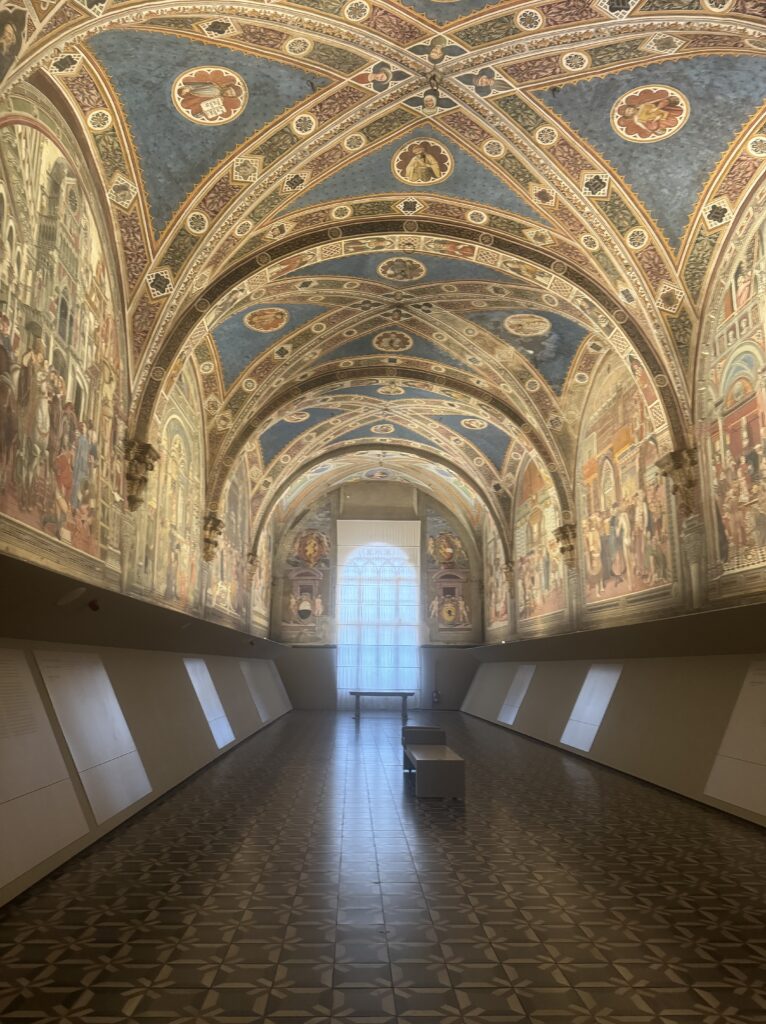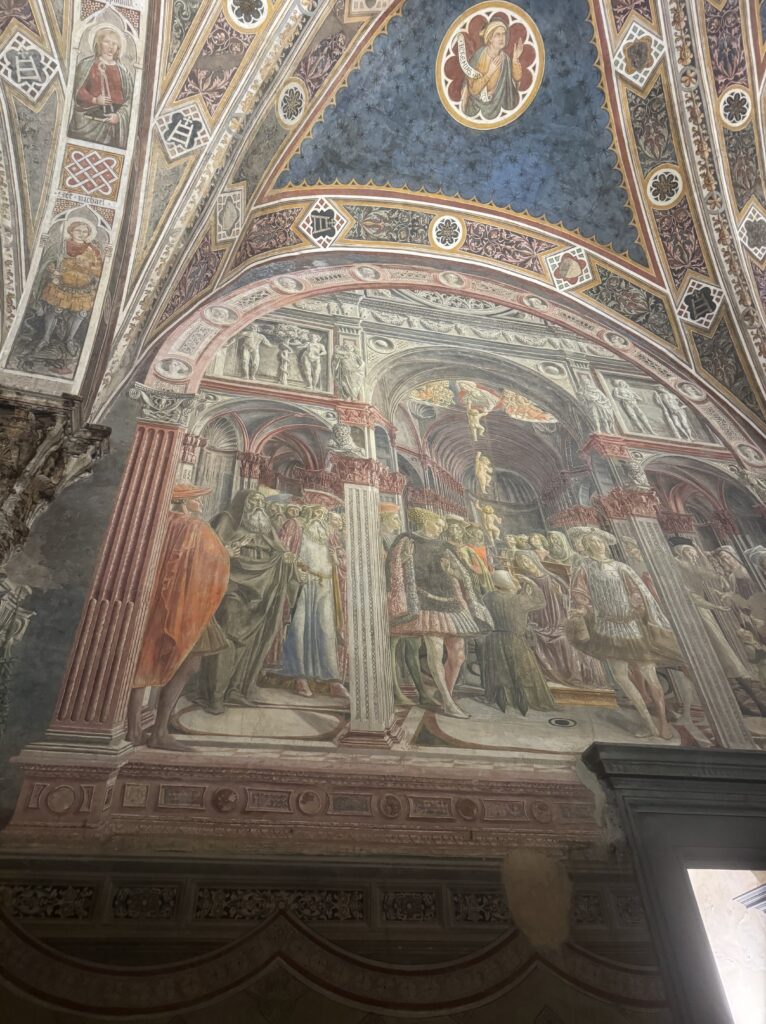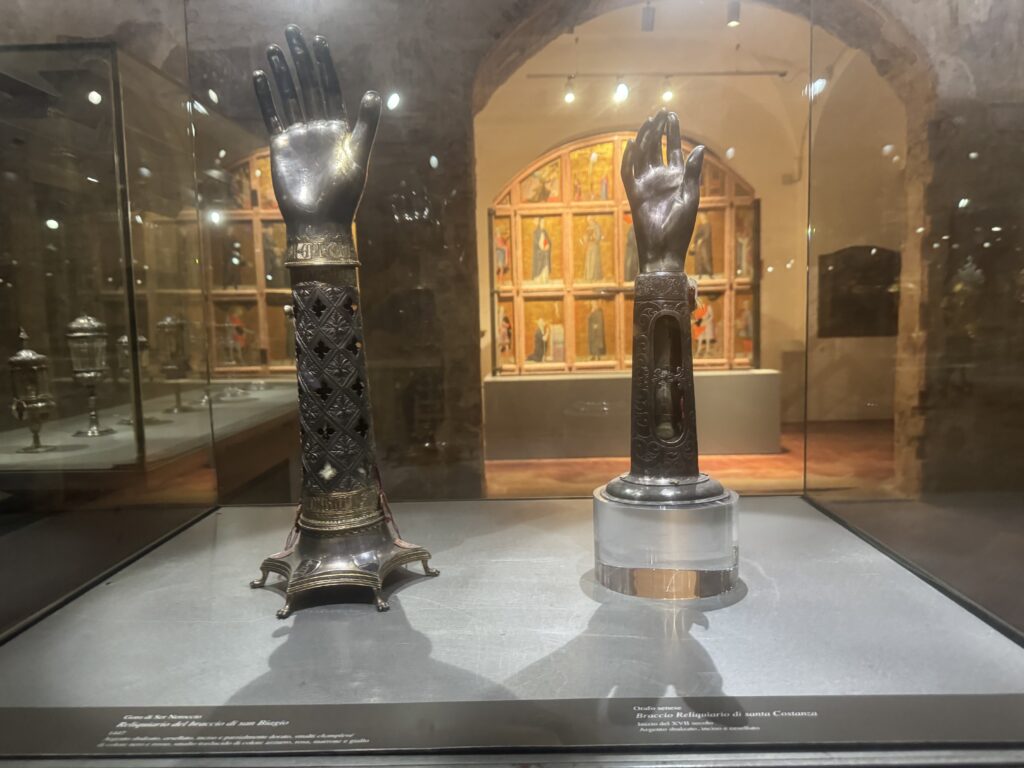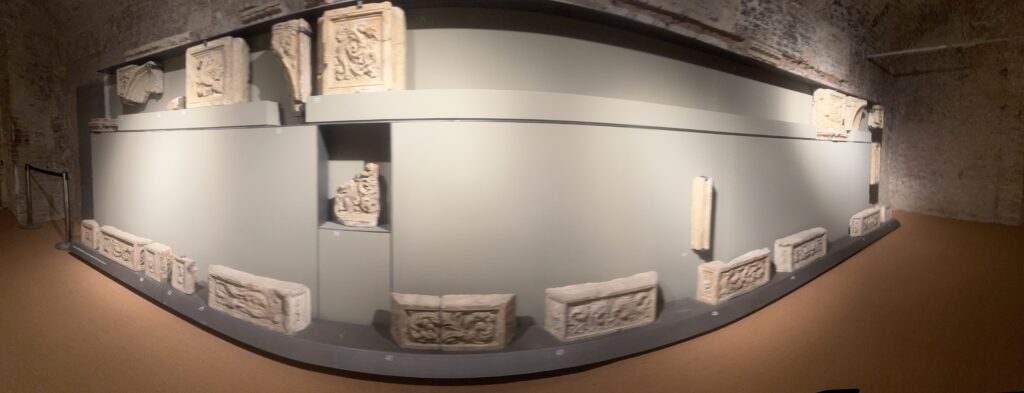Santa Maria della Scala (St. Mary of the Ladder) sits atop Cathedral Hill in Siena and is a monumental complex. Once a medieval hospital, it is connected to the Francigena Route (the French road) which is a pilgrimage route between Canterbury, through France and Switzerland to Rome then to Apulia, Italy where ports embarked to the Holy Land (modern state of Isreal). This site functioned as a hospital even up to 50 years ago, which is truly remarkable. It was previously part of a huge restoration project and is now a museum open to the public with exhibition spaces within. The hospital is located directly across from the Duomo, Siena Cathedral, the church was paid for by the people and republic of Siena. The hospital was founded in 848 they say by a cobbler turned monk named Sorere. A place for caring for the abandoned children, the poor, sick, pilgrims, and is one of Europe’s first and oldest hospitals. Children reared here, the boys were brought up to do certain jobs in the community and the girls were given a dowry. This hospital has become the community’s historic center of culture and art in Siena. In times of siege, famine and plague during the medieval ages as a food kitchen for the community.

On the main level, when you first enter the museum there is a bookstore and even within the space is high, airy whose walls are adorned with frescoes. There is an area that functions as an art gallery and shows wonderful artworks like the Tower of Babel by Bruegel. Also on this level there is the Pilgrim’s Hall, where pilgrims stayed who were on their way to Florence, Rome or the Vatican. This is a most impressive cultural gem within Siena. Charles the V visited and was impressed by the charity and capability of the benefactors and artistry in the creation of this space. The artwork shows pilgrims from all over the world and shows people without clothes being clothed in tunics. There are panels that accompany each detailed fresco that relates the story of the artwork within this hall. The hospital contains relics from the cross of Christ. During the 14th century, the hospital commissioned many interior and exterior frescoes and altar pieces after the Black Death, some of which were completed by painter Bartolommeo Bulgarini. The Old Sacristy contains precious relics and altarpieces, with walls and ceilings painted by Lorenzo Veccietta. There is evidence of original artworks that were once attached to the wall and impressions that remain where they were attached. There is a gospel stored from the 1300s, and a wooden paneled art piece showcases different saints. There is also a church of Holy annunciation on this level, which is ornate and detailed in artwork and marble.

On the upper levels in addition to chapel areas, there is much art showcased on the walls and a room with projected images on the wall showcasing the development of the site over the ages. There were originally beautiful frescoes on the outside of the building too, but unfortunately those didn’t survive but there are written records discussing the frescoes and the artist’s responsible.
Lower Level:
The “barn” area contains an area that lodged travelers and pilgrims and now contains the Fonte Gaia by Renaissance artist Jacopo della Quercia. There are painting within that depict St. Catherine of Siena healing the sick and comforting them. There was an area that stored jewelry, chalices and other books and documents, manuscripts with covers made with gold enamel. (Citation https://touritalynow.com/…/siena/santa-maria-della-scala)

Lowest Level
This level contains the national Archeological Museum of Siena. These spaces originally used for storage they have converted to house collections recovered in Siena. This is where I saw many stone pieces that show Mary and Child which were originally a part of the Fonte Gaia (which now stands restored in Piazza del Campo).

Overall, this site is extensive, and the museum presents different areas of the hospital’s history well all the while showcasing its extensive and significant works of art and frescoes. The building serves as a testament to the extraordinary history of Siena, which this hospital was valued by and served the community for 700 years.